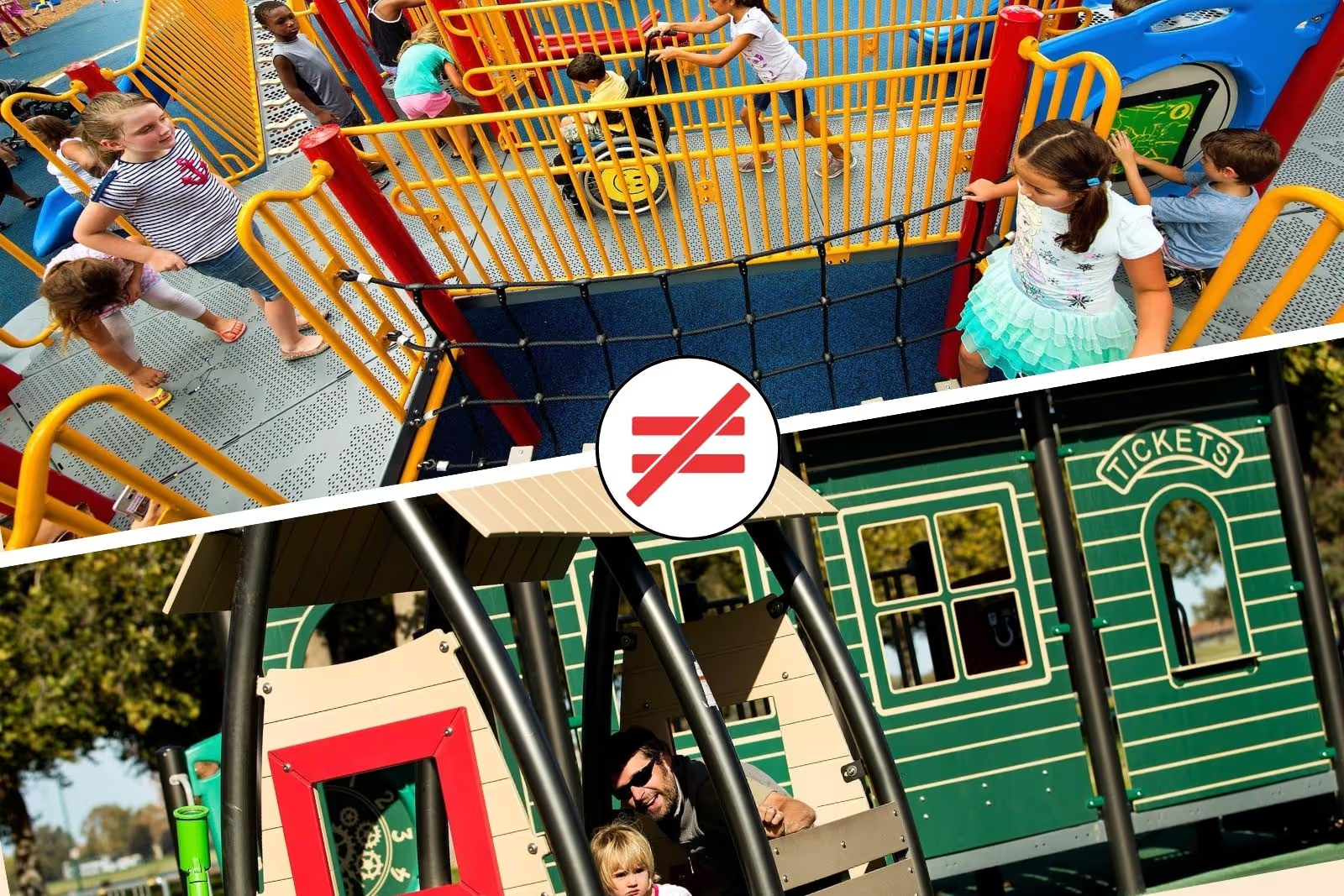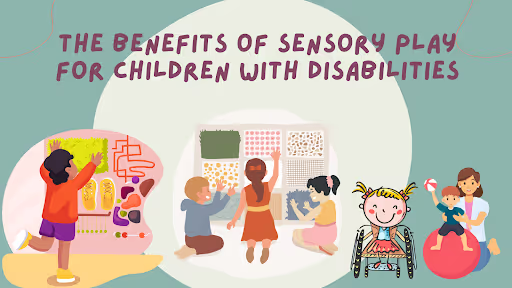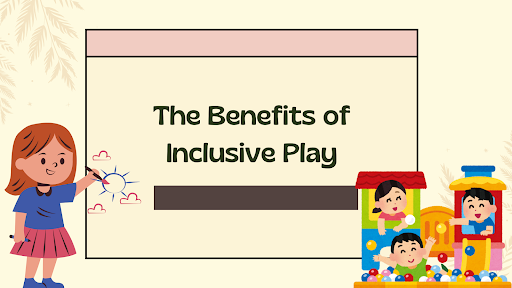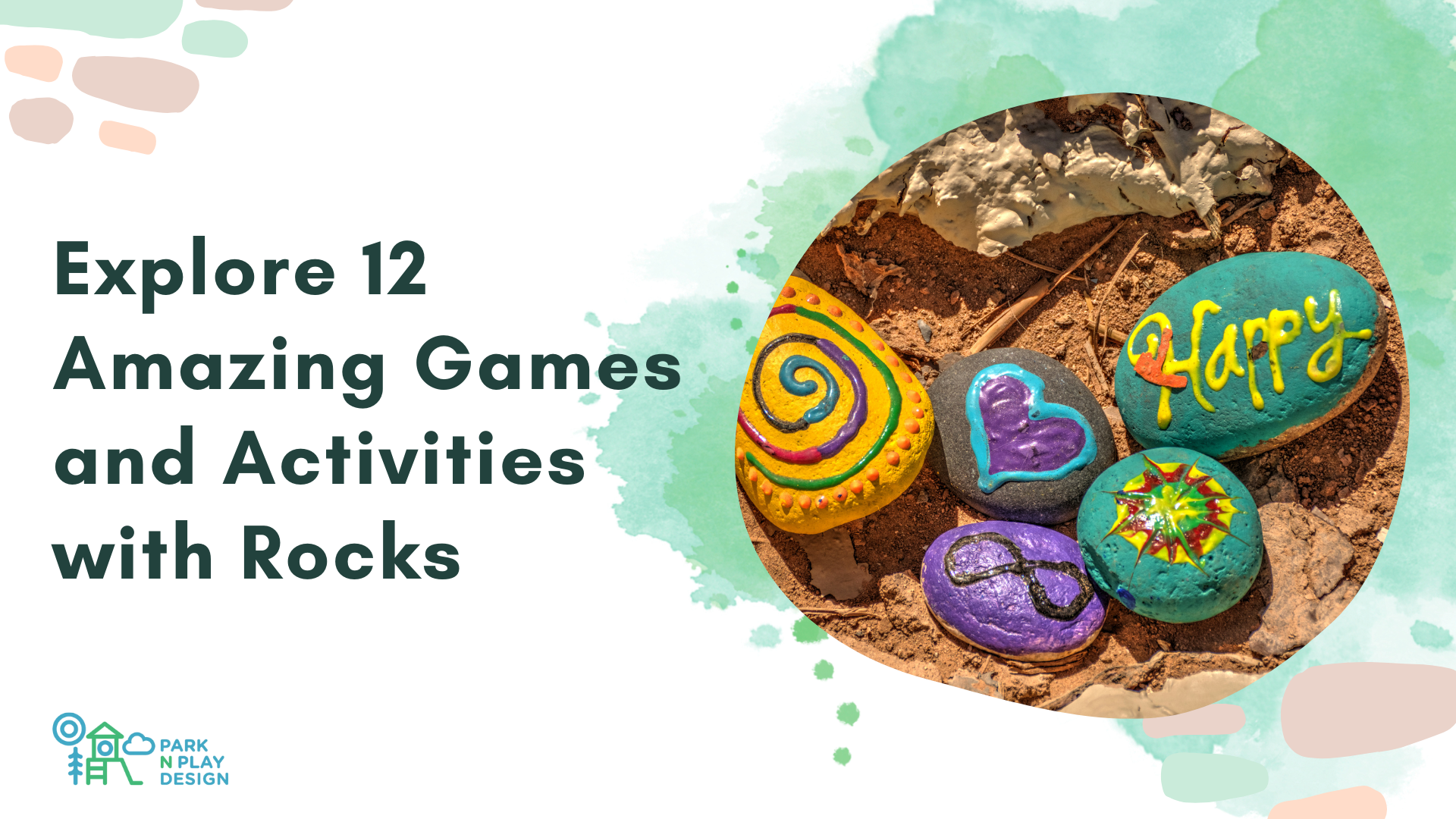How to Design a Public Park
Discover how well-designed public parks boost community health, support social connections, and encourage sustainable outdoor spaces.


Creating a public park is more than just designing an outdoor space—crafting an environment that enhances community well-being, encourages social interactions, and promotes sustainability. Public parks are vital for communities, providing a sanctuary for relaxation, exercise, and connection with nature.
The ultimate goal in designing such spaces is to create accessible, welcoming, and sustainable areas that meet the needs of all community members, regardless of age or ability.
What are Public Parks?
Public parks are essential outdoor spaces designed for recreation, relaxation, and community engagement, accessible to all members of society. These verdant areas vary in size and scope, encompassing everything from quaint neighbourhood green spots to expansive nature reserves.
They offer various activities and facilities catering to diverse interests and needs. Beyond serving as places for play and physical activity, public parks act as vital communal hubs where people can gather, socialize, and escape the confines of urban life.
They significantly enhance the quality of life within communities by providing accessible natural spaces that promote health, well-being, and environmental appreciation. Through their role in fostering community cohesion and connecting people with nature, public parks are invaluable assets that enrich urban environments and contribute to the societal and ecological fabric of cities and towns.
How to Design a Public Park

Designing a public park involves careful planning and consideration to meet the community's needs and expectations. Here's a step-by-step guide to creating a park that everyone can enjoy.
Step 1. Select the Perfect Spot for Your Park
Choosing the proposed park space influences its success and usability. A prime park site integrates seamlessly into the community fabric, offering easy accessibility, visibility, and connections to its users.
Ideal locations are those within walking distance of residential neighborhoods, close to schools, or adjacent to other community facilities, ensuring that the park becomes a vital component of the community's daily life. By selecting a spot that aligns with these criteria, the park is more likely to serve as a cherished gathering space, promote healthier lifestyles, and enhance the overall quality of life for the community members.
A landscape architect plays a crucial role in identifying and evaluating these locations to ensure that the park's design maximizes its benefits to the community.
Step 2. Learn What the Community Wants
Understanding what the community desires from a new park is a critical step in planning. Engaging directly with residents through various means, such as surveys, public meetings, and online forums, allows planners to gather valuable insights into the community's preferences and needs.
Whether the community expresses a desire for active sports facilities, playgrounds for children, serene shaded areas for relaxation, or a combination of these, such feedback is instrumental in designing a park that truly reflects and accommodates the interests and needs of its users. This participatory approach ensures the park's relevance and fosters a sense of ownership and pride among the community members, contributing to the park's long-term success and sustainability.
Step 3. Involve the Community Involved in Planning
In developing a community park project, involving the community members goes beyond initial consultations and will encourage community members, including local residents, in the decision-making process, from design to selecting park features, you promote a more profound sense of ownership and commitment to the park project's future.
This inclusive approach ensures that the park reflects the community's diverse needs and preferences, leading to a space that is not only more utilized but also cherished. Engaging the community through workshops, design charrettes, and continuous feedback loops helps craft a park project that genuinely serves as a communal asset, fostering stronger community bonds and ensuring its relevance and sustainability over time.
Step 4. Plan the Green Spaces and Structures
When planning the green spaces and structures within a park, it's essential to create an environment that serves multiple purposes—both recreational and ecological. A thoughtful mix of landscaped areas, lush trees, and vibrant gardens enhances the park's aesthetic appeal and promotes biodiversity and environmental stewardship.
Integrating functional structures such as pavilions, restrooms, and shelters adds to the comfort and convenience of park users, making the space welcoming and accessible. This careful balance between natural beauty and built amenities encourages a broader range of activities, from strolls and picnics to community gatherings and educational programs, making the public space a versatile space for everyone to enjoy.
Step 5. Create Spaces for Different Activities
Creating spaces within a park catering to various activities ensures that everyone in the community can find something enjoyable. By designing areas specifically for sports fields and outdoor recreation, such as sports courts and playgrounds, and balancing these with quieter zones designated for picnics, reading, or yoga, parks can appeal to an extensive audience.
This strategic layout encourages diverse groups of people to use the park simultaneously, fostering a vibrant community space that meets various interests and needs. Including various activity areas maximizes the park's usability and promotes physical and mental health among the community members by providing accessible and inviting spaces for exercise, relaxation, and socialization.
Step 6. Select Fun and Safe Playground Gear
Selecting playground equipment that is both fun and safe is a critical aspect of park design. Choosing gear that caters to a wide range of ages and abilities is essential, including designs accessible to children with disabilities.
This inclusivity ensures that all children can play, explore, and learn in a safe environment. Inclusive playground designs can feature sensory-rich elements that cater to different developmental needs, providing a stimulating and supportive space for children to grow and interact.
By prioritizing safety and fun, parks can become beloved destinations for families, encouraging active play and social interaction among children in a secure setting.
Step 7. Choose the Best Ground for Play Areas
Choosing the suitable ground material for play areas is crucial for ensuring children's safety and simplifying maintenance. Materials like rubber mulch, sand, or wood chips are popular because they absorb fall shocks, significantly reducing the risk of injuries.
These materials are effective in cushioning impacts and offer the advantage of being relatively easy to maintain, keeping the play areas safe and inviting for children.
Step 8. Add the Right Benches and Tables
Incorporating suitable picnic tables and park amenities into community park design is essential for creating comfortable and convenient spaces for visitors. Strategically placing seating options throughout the park can enhance the visitor experience by encouraging relaxation and social interaction among community members.
When selecting benches and tables, it's essential to consider durable and vandal-resistant materials that complement the park's overall aesthetic. This approach ensures the longevity and usability of the park's furnishings, making the park a more welcoming and enjoyable space for everyone.
Step 9. Light Up the Park for Safety and Beauty
Implementing adequate lighting in a park is crucial for enhancing the space's safety and aesthetic appeal, especially during the evening hours. Well-placed lighting ensures that pathways, entrances, and key activity areas are sufficiently illuminated, reducing the risk of accidents and enabling the park to be a safe place for evening activities.
Beyond safety, lighting also significantly creates an inviting and enchanting atmosphere after dark, encouraging visitors to enjoy the park's beauty during nighttime. Proper lighting design can transform a park into a vibrant community hub at all times, offering everyone a secure and attractive environment.
Step 10. Monitor and Maintain the Park Post-Opening
After the park's grand opening, it's crucial to establish a routine for its ongoing upkeep to preserve the beauty and functionality of the green spaces, structures, and amenities. This involves regular maintenance tasks such as landscaping, repairing damaged equipment, and ensuring cleanliness throughout the park.
Additionally, periodic safety inspections of playground gear and structures are necessary to prevent accidents and ensure a safe environment for visitors. Engaging with the community for feedback and suggestions can also guide the maintenance efforts, ensuring the park continues to meet its users' evolving needs and preferences.
By prioritizing the monitoring and maintenance of the park post-opening, the managing authorities can ensure that it remains a welcoming, safe, and vibrant space for everyone to enjoy.
Design Considerations for Public Parks
When designing a public park, it's crucial to focus on accessibility, sustainability, and meeting community needs to create inclusive, environmentally responsible spaces that reflect the desires of the people who will use them.
1. Accessibility
Parks and local schools should transcend basic ADA requirements to offer inclusive play experiences. This involves creating playgrounds and spaces that are accessible not just in terms of physical access but also in providing a range of play experiences that cater to children of varying abilities, including those with sensory disorders, visual impairments, or mobility challenges.
The goal is to design environments where all individuals can engage with and enjoy the playground equipment, fostering an atmosphere of collaboration and social inclusion for your park location.
2. Sustainability
Sustainable urban parks focus on a broad spectrum of objectives, including green infrastructure, water and energy conservation, waste management, and biodiversity support. These goals aim to ensure parks contribute to the health of the city's ecosystem by managing resources wisely, promoting environmental education, and preparing for resilience against disasters.
Sustainable design in parks also means considering the long-term maintenance and management of the space to ensure its enduring benefit to both the community and the environment.
3. Community Needs
Engaging with the community to understand and incorporate their needs is fundamental to successfully designing public parks. This might involve creating spaces supporting a wide range of activities, from active play areas to quiet zones for relaxation, ensuring amenities for people of all ages and abilities.
The design process should also consider the economic and environmental benefits of the park, such as using native vegetation for flood control and pollution absorption and creating green spaces that can boost local tourism and contribute to the community's economic vitality.
Types of Public Park Site Furnishings

1. Outdoor Benches
Outdoor benches are a fundamental fixture in public parks, providing comfortable seating options for visitors to relax and enjoy the natural surroundings. These versatile furnishings come in various materials, including wood, metal, and concrete, offering durability and aesthetic diversity to suit different park environments.
Whether placed along pathways, near playgrounds, or overlooking scenic vistas, outdoor benches invite people to take a moment to rest, reflect, or take in the park's beauty.
2. Picnic Tables
Picnic tables are essential for creating communal spaces within public parks and facilitating gatherings, meals, and social interactions. These tables typically have a sturdy tabletop and attached benches, making them ideal for picnics, outdoor dining, or group activities.
They come in various materials, such as wood, metal, and recycled plastic, offering options that cater to both aesthetic preferences and durability requirements. Picnic tables are strategically placed throughout parks, allowing visitors to enjoy shared meals or spend quality time together in a scenic and accessible setting.
3. Dining Sets
Dining sets in public parks provide a more elevated outdoor dining experience, allowing visitors to enjoy a meal in a comfortable and stylish environment. These sets often consist of a table and matching chairs designed for aesthetics and functionality.
Dining sets can be found in designated areas within parks, such as outdoor cafes or pavilions, and they provide an attractive space for individuals or groups to dine, socialize, or work while immersed in the park's natural beauty. The choice of materials, from wood to metal or even modern synthetic materials, allows for a range of design options to enhance the overall ambiance of the park.
4. Trash Receptacles
Trash receptacles play a crucial role in maintaining the cleanliness and tidiness of public parks. These containers are strategically placed throughout the park to encourage responsible waste disposal.
They come in various sizes and designs, constructed from durable materials that withstand outdoor conditions. Effective waste management is vital for preserving the beauty and environmental integrity of the park, and well-placed trash receptacles help ensure that visitors can dispose of their waste conveniently, contributing to the overall enjoyment and sustainability of the park.
5. Accessories
Accessories in public parks encompass a wide range of additional elements that enhance the overall experience for park-goers.
- Signage and Wayfinding Systems: Clear and well-placed signage helps visitors navigate the park efficiently, providing information about points of interest, facilities, and directions. Wayfinding systems ensure visitors can easily find their way around, enhancing their overall park experience.
- Pet Waste Stations: Responsible pet ownership is encouraged by installing pet waste stations in parks. These stations provide a convenient and hygienic way for pet owners to dispose of their pets' waste, maintaining a clean and pleasant environment for all park-goers.
- Bike Racks: Accommodating cyclists is essential for promoting sustainable transportation and healthy lifestyles. Bike racks offer secure places for cyclists to park their bikes while they enjoy the park, encouraging more people to cycle as part of their park visit.
- Decorative Elements: Decorative elements like planters and sculptures contribute to the park's aesthetics and overall ambiance. They add artistic and visual appeal to the environment, making the park more inviting and attractive for visitors.
Accessories complement the park's theme and functionality, adding value to the visitor's experience while serving practical purposes, such as improving safety or convenience. Thoughtful selection and placement of these accessories make the park a well-rounded and enjoyable space for the community.
To enhance your park or playground's site furnishings, consider partnering with Park N Play Design for expert guidance and top-quality solutions to create the perfect outdoor environment.
Set Your Park Design up for Success With Park N Play Design
The thoughtful design of public parks is essential for fostering vibrant communities, enhancing the health and well-being of individuals, and providing a much-needed sanctuary from the urban environment. By focusing on sustainability, valuing community input, and ensuring accessibility for all, we lay the foundation for these green spaces to meet their intended purposes and be valued assets for future generations.
Such an approach to park design emphasizes the importance of creating inclusive, welcoming, and resilient outdoor areas that can adapt over time while continuing to serve as central hubs for community life, recreation, and environmental stewardship. This commitment to thoughtful park design is a testament to our collective responsibility to enhance the livability of our urban landscapes, making them healthier, more sustainable, and enjoyable for everyone.
Set your park design up for success with Park N Play Design. Let's work together to create spaces that bring joy, foster community, and stand the test of time.
Join us in making your community a better place, one park at a time.
FAQs
How do you build a public park?
Building a public park begins by recognizing the community's need for green space, often gathered through surveys and public input. This can then be integrated into the city's Comprehensive Plan and the Parks and Recreation Open Space (PROS) Plan. Subsequently, negotiations for land and funding occur, leading to the park's design based on community feedback and the available land.
What are the design features of a park?
Key design features of a park include:
- Accommodating specific age groups with appropriate playground equipment.
- Working with the existing terrain and architecture to enhance the park's natural beauty.
- Ensuring the inclusion of a variety of recreational activities.
Sustainable materials and designs that cater to all ages and abilities are also essential, along with functional site furnishings like benches and trash receptacles to improve visitor experience.
How do you plan a park?
Planning a park involves several steps, starting with determining the community's needs through surveys and public meetings and then creating a comprehensive project plan that includes site selection, funding, construction, and programming. Implementing the plan requires coordination among stakeholders, city officials, and contractors to ensure the project's success.












